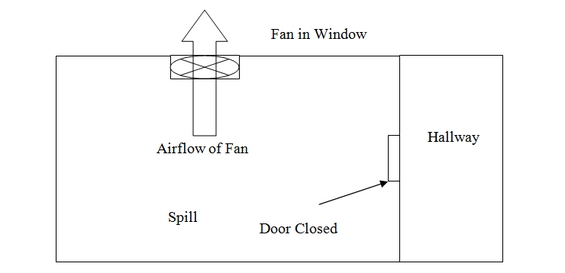Overview
The Indoor Air Quality (IAQ) Program routinely receives inquiries concerning the accidental spill and clean up of small amounts of elemental mercury. Such spills are usually associated with mercury containing devices, such as thermometers, thermostats, barometers and medical equipment, such as older sphygmomanometer (blood pressure cuffs).
For cleaning, handling and disposal of broken fluorescent lights, including compact fluorescent lights, please refer to the Massachusetts Department of Environmental Protections guidelines.
The IAQ Program recommends the following procedures to assess potential health impacts and to clean up small amounts of mercury from spills that occur in homes or other buildings.
Ventilation and Isolation
- Do Not Walk either on broken mercury-containing materials or on visible mercury.
- Do Not Use a vacuum cleaner or broom to remove or gather broken mercury-containing materials or on visible mercury.
- Close interior doors of spill areas.
How to Ventilate the Mercury Spill Location

- Place a fan in the window operating in a manner to blow air directly outdoors.
- Interior doors should stay closed to prevent mercury contamination in other areas of house/building.
- Operate the fan in the spill areas for at least a day whether mercury is visible or not to ensure optimal ventilation (weather permitting).
Spill Clean up
If mercury was spilled on a hard, non-porous surface (e.g., metal, tile, plastic, etc.):
- Do not use a vacuum cleaner or broom to clean the area. Use of a vacuum cleaner can both contaminate the vacuum cleaner and spread the mercury contamination.
- Gather visible mercury together using a rigid material (e.g. squeegee, cardboard, thick paper).
- Work to gather spilled mercury beads toward a central location to form a large bead.
- Push the mercury beads into a plastic dustpan or use an eyedropper to pick up the beads.
- Tape can also pick up small mercury beads, but use caution due to problems associated with mercury adhering to tape.
- Collect all mercury into a used, wide-mouthed, plastic container with a screw-on lid.
- Optional step: Sprinkle sulfur powder (available at some lawn and garden stores) on the spill area after cleaning up the beads of mercury; a color change from yellow to brown indicates that mercury is still present and more cleanup is needed. If the sulfur powder stays yellow, this indicates clean up efforts were successful.
- After mercury is removed, clean area with soap and water. Discard bucket, sponge and rubber gloves as if mercury contaminated.
If the mercury was spilled on hardwood or other surfaces that may have crevices:
- If mercury accumulates in cracks in flooring or below floorboards, it cannot be completely removed using the methods described previously.
- Contacting an environmental remediation firm that possesses a mercury spill clean up kit may be necessary.
If the mercury was spilled on carpet or other cloth material:
- Cloth materials cannot be cleaned completely of mercury contamination and should be discarded.
- If the contaminated item is removable and disposable (throw rug, furniture cover, sheet, clothing, paper, cardboard, etc.), carefully place the contaminated material into a sealable plastic bag.
- Place the disposable container into a plastic bag that you can tie off at the top (to keep the contents inside) and transport to an outdoor trash bin right away.
Anything that has come in contact with mercury, including all clean up materials must be taken to a recycling facility or household hazardous waste program for proper disposal.
Once mercury clean up is completed, wash your hands and other parts of your body that may have come in contact with mercury.